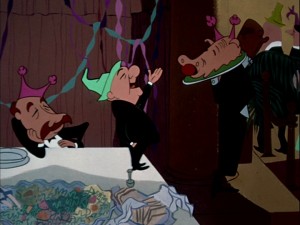
The release of Shout Factory’s Mr. Magoo: The Theatrical Collection is a cause for celebration. It’s been delayed for almost two years now (when I was driving home through New Jersey with one of the people who worked on transferring the negatives, he indicated that the work had been completely done ages ago), but whatever the circumstances were, it’s out and a purchase is in order.
I detect no vandalism to the cartoons I’ve viewed thus far in the way of DNR or aspect ratio distortion. I’m no expert on the UPA cartoons’ exhibition history, but the widescreen cartoons seem appropriately presented. Mark Kausler said the later cartoons on the TCM Jolly Frolics collection were “marred,” but there was no consumer outrage. Possibly because everyone had fallen asleep during the likes of Ham and Hattie and Baby Boogie, and the same may hold true for the later cartoons on this set.
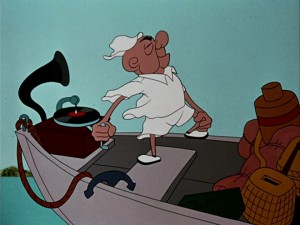 As has been well established in the wake of that marvelous TCM set, the UPA cartoons worthy of the most attention and praise are those done when John Hubley was commanding the ship. Roughly the first half of the first disc of this set is from that era and they are inarguably the best, no question. In those cartoons, the sense, as Hubley intended, that Magoo would be making most of these mistakes even if he wasn’t near-sighted is easily apparent. Spellbound Hound, the second cartoon, features a scene poignant in its absurdity: Magoo is on a fishing boat and has mistaken a record player for the motor. He knows something is wrong, but he’s determined to make the record player operate as a motor, and is cheerfully triumphant when he finally gets the thing to play continuously.
As has been well established in the wake of that marvelous TCM set, the UPA cartoons worthy of the most attention and praise are those done when John Hubley was commanding the ship. Roughly the first half of the first disc of this set is from that era and they are inarguably the best, no question. In those cartoons, the sense, as Hubley intended, that Magoo would be making most of these mistakes even if he wasn’t near-sighted is easily apparent. Spellbound Hound, the second cartoon, features a scene poignant in its absurdity: Magoo is on a fishing boat and has mistaken a record player for the motor. He knows something is wrong, but he’s determined to make the record player operate as a motor, and is cheerfully triumphant when he finally gets the thing to play continuously.
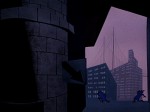
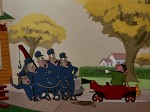
The combination of character animation, humor, and modern design is in perfect balance in these first Magoos. I was struck by how well the design in Barefaced Flatfoot (by Abe Liss and Jules Engel) works to make the preposterous story (Magoo, obsessed with detective stories, is worried his nephew Waldo will get money to repair his car through ill means) even funnier by making the settings so cold and serious. Another highlight from the restoration was realizing that the crooked moving men in Bungled Bungalow are a single mass. That was an intriguing surprise, and I wish the rest of the set yielded more of them.
It’s to be expected that a set devoted to a single character is going to run on autopilot when you get deeper into it; no one with any seriousness could vouch for which Tom and Jerry, Woody Woodpecker, or Popeye cartoons of the mid-to-late ’50s are “better than average.” The real surprise here is how darn fast the Magoo cartoons coast. By the end of the first disc, Magoo has lost his edge and become a more affable coot, and the jokes take on a predictability that would make Seymour Kneitel blush. Pete Burness directed most of the Magoos, and it’s apparent his years at MGM and Warners didn’t have much of an impact on his comic sensibility. Those cartoons took on formula too, but they aren’t nearly as offensive as the ones here.
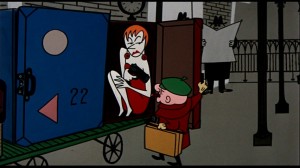 Which is sad, because it didn’t have to go downhill so quickly. As you journey forth, the cartoons not only lose the humor. As early as Captains Outrageous that calculated, studied animation Art Babbitt brought to the animals in Ragtime Bear, Grizzly Golfer, and Fuddy Duddy Buddy is gone and replaced with straight, no-frills acting. The bloodless design work becomes overwhelming, as in Magoo Express, where Magoo seems at odds with where the UPA look was heading. The cartoons become a kind of “radio noise,” material you put on in the background while doing something else in lieu of complete silence. (And that really depends on your tolerance for Jim Backus.)
Which is sad, because it didn’t have to go downhill so quickly. As you journey forth, the cartoons not only lose the humor. As early as Captains Outrageous that calculated, studied animation Art Babbitt brought to the animals in Ragtime Bear, Grizzly Golfer, and Fuddy Duddy Buddy is gone and replaced with straight, no-frills acting. The bloodless design work becomes overwhelming, as in Magoo Express, where Magoo seems at odds with where the UPA look was heading. The cartoons become a kind of “radio noise,” material you put on in the background while doing something else in lieu of complete silence. (And that really depends on your tolerance for Jim Backus.)
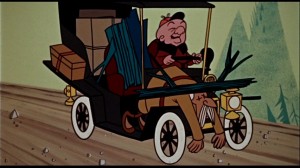 While watching the untitled documentary produced for the set, I was astounded that the animator Bob Longo’s comments on how the cartoons were moving away from design to just cheapness by the time of the Oscar-winning When Magoo Flew made the cut. A slip, no doubt, as most of the interviewees try to sidestep or understate that UPA introduced the concept of bad animation in service to design (good or bad) as an accepted industry practice. Make no mistake though: these guys off their course were establishing kids’ TV animation. How you can watch something like Magoo’s Moosehunt, or the feature 1001 Arabian Nights (essentially a Captain Crunch commercial in design and feel expanded to 75 minutes, but with an amazing George Duning score), without drawing that conclusion is beyond me.
While watching the untitled documentary produced for the set, I was astounded that the animator Bob Longo’s comments on how the cartoons were moving away from design to just cheapness by the time of the Oscar-winning When Magoo Flew made the cut. A slip, no doubt, as most of the interviewees try to sidestep or understate that UPA introduced the concept of bad animation in service to design (good or bad) as an accepted industry practice. Make no mistake though: these guys off their course were establishing kids’ TV animation. How you can watch something like Magoo’s Moosehunt, or the feature 1001 Arabian Nights (essentially a Captain Crunch commercial in design and feel expanded to 75 minutes, but with an amazing George Duning score), without drawing that conclusion is beyond me.
Suffice to say, you’re getting a lot for Shout Factory’s ridiculously low price of $29.93. Just think of it as getting those wonderful early cartoons with three discs of bonus features.

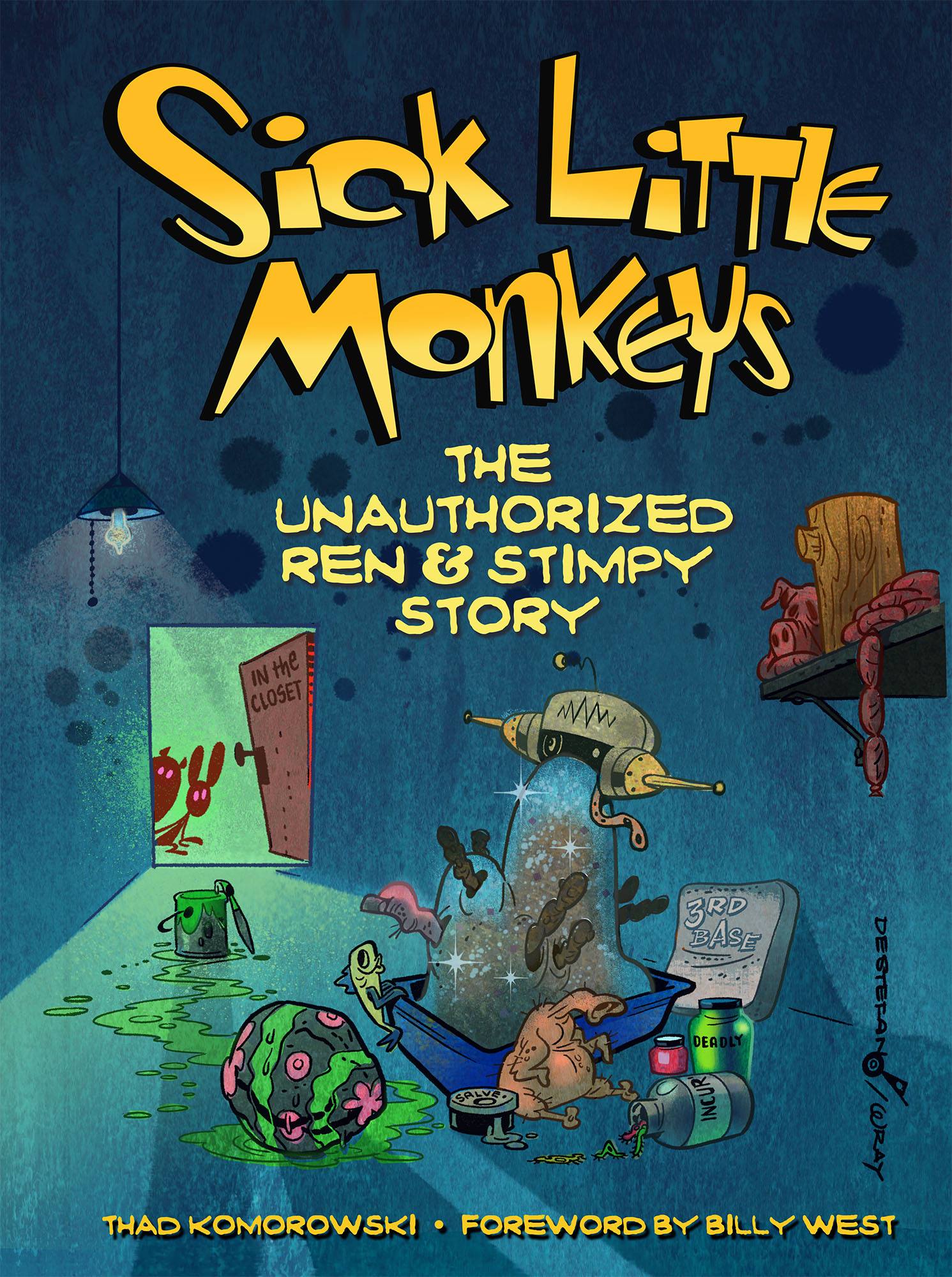
When Michael Barrier said back in 1969 “There’s an urge to grind Bugs Bunny and Donald Duck into the dust, not merely to do something that doesn’t much resemble Bugs Bunny or Donald Duck” he might as well have been pointing to the film critics of nearly 20 years earlier as the grinders.
In their efforts to find something that wasn’t Disney sentimentality or Warner Bros. slapstick violence, they latched onto UPA and wouldn’t let go. So the studio was praised and honored for its truly groundbreaking work during the Hubley years and was praised and honored for its later Magoos, Geralds and one-shots, right up to the moment Columbia decided audiences loved their creations so much they could replace them with the banal Loopy de Loop and no one would know the difference.
Any decent release of theatricals is a major event nowadays, but honestly, some of the later theatrical Magoos are less re-watchable than the better made-for-TV ones, even with their more limited animation. At least those have the pleasure of featuring people like Mel, Frank Nelson, Paul Frees and others supporting Backus on the audio tracks. If you’re going to do illustrated radio, get voices that already are masters of radio.
Set 8 /10 because Spellbound Hound has end scene missing. MAGo0 GOES WEST 10 seconds edited out near end of cartoon! Sony Was given Pencil Tests NOT Present! Mago0’s 3 point landing transfer very strange! Comments on Mother Mago0 track incorrect – Henny Backus is the voice not Pat Carroll. Other than this and a few other errors a must buy!
And not to sound ungrateful (love, LOVE the set btw), but Terror Faces Magoo is presented in its matted 1.85:1 theatrical ratio when it was promised on the case that it was presented in its original full screen.
Hey, do you think you could transcribe the missing ten seconds? Thanks!
I will transcribe the cut sequence if you can answer some questions in 69 words or more.I wrote 2 lengthy descriptions that were erased! Why were the pencil tests eliminated? Why did Evanier state Pat Carroll was the voice of Mother Mago0 in great detail, when it has been documented in many books that it is in fact Henny Backus? And lastly , THE 69 TH BILLION DOLLAR QUESTION when were these cartoons restored – year, by what individual, etc. WAS THE DREAMWORKS TAKEOVER the reason this set was delayed further or games by Sony?
Don’t know the answer any of those questions, sorry.
Hey DB, shoot me an e-mail if you’d like to chat, I might know this stuff.
my********************@gm***.com
Having not seen the DVD’s yet, I’ll take a guess personally. Having watched that cartoon many times on VHS 30 years ago, could it be the moment where Magoo sees a park attendant picking up trash yelling “What, cotton pickers! What am I doing in Georga?”
“Set 8 /10 because Spellbound Hound has end scene missing.”
Wouldn’t surprise me if the original negs Sony has pretty much uses those “Columbia Favorite” end titles as usual. Wonder how many earlier Magoo’s on this set have these as well. That was one thing that was nice about the “Jolly Frolics” set I liked was getting to see the original end titles to some of those like Gerald McBoing-Boing, The Unicorn in the Garden or The Tell-Tale Heart. These were all re-released later on with generic end titles simply because they were forced to do so (which seems kinda sad thinking what kind of treatment the earlier Screen Gems cartoons got with their openings axed and replaced with the same title card for every one, up there with the WB Blue Ribbons).
Sad about he misinformation giving in the commentaries as well. I wouldn’t call it a “ball dropping” moment but it nearly got there I guess.
Oddly enough, both Hubley and Burness would of agreed with this essay. Just in case no one is aware about this info, Hubley wrote this about the later Magoo shorts…
“I feel that as the series developed the formula became somewhat mechanical. There were too many nearsighted gags, not enough situation comedy and character conflict. His motivation became unclear. In earlier shorts he was doggedly trying to get some rest, or prevail upon a lackadaisical friend to engage in energetic sport, or to file a claim for insurance on a bogus policy. Always involved in a pulsing, dynamic action.”
And reflecting back, Burness said this…
“I have later wondered if I was right. I have wondered because he got progressively warmer until he was weakened. It should have been used with discrimination. He might break out from time to time in a sentimental mood, but I believe that his basic character would have been stronger if he has continued crotchety, even somewhat nasty. I think there was a certain dilution of his character in making him too sweet.”
If anyone wants more insight from the two, go here:
http://www.jstor.org/stable/1225373?seq=1
At least When Magoo Flew was funny, especially regarding the television gag. Of course, I have agree with that UPA was bad case of trying too hard to be original, only to end up hurting themselves and animation as a whole.
I think it’s more a case of misinterpreting streamlined design for the best way to make crap.